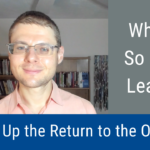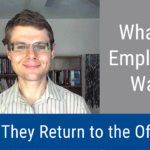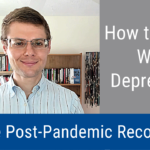Gleb Tsipursky
Redefining Hybrid Office Space to Boost Employee Productivity
Employers must devise effective modifications of hybrid office spaces. Employees’ work requirements have changed. They will do mostly collaborative work in the office while doing their individual tasks at home.
Why Do So Many Leaders Screw Up the Return to the Office? (Video and...
In planning the return to the office, leaders can fall prey to dangerous judgment errors which can cause them to wrongly assess their employees’ needs. That's the key take-away message of this episode of the Wise Decision Maker Show, which describes why so many leaders screw up the return to the office.
How Not to Let Cognitive Biases Control Us When Dealing with COVID
Protect yourself from poor COVID-related decisions by being aware of cognitive biases -- particularly the normalcy bias, attentional bias, and planning fallacy -- and making strategic plans that can prevent your gut reactions from taking over.
Creating Competitive Advantage in Returning to the Office
For creating competitive advantage in the new normal, forward-looking leaders need to let go of their preferences for in-office work. They need to adopt a hybrid-first model for most staff, and support full-time remote work for a minority.
Best Return to Office Plan: A Team-Led Approach
The best practice on the return to office plan involves a team-led hybrid-first model with some fully remote options. That means empowering lower-level team leaders to choose the work arrangement that best serve their team’s needs
Why Do So Many Leaders Screw Up the Return to the Office?
Leaders can fall prey to dangerous judgment errors which can cause them to wrongly assess their employees’ needs. Significant research shows that employees want to continue working remotely after the pandemic.
What Influences Your Shopping Choices? (Video and Podcast)
When it comes to shopping choices, we overestimate our abilities to keep our impulses in check. You can avoid poor shopping choices by developing a host of shopping mental skills. That's the key take-away message of this episode of the Wise Decision Maker Show, which describes what influences your shopping choices.
What Do Employees Want When They Return to the Office? (Video and Podcast)
Our assumptions about what others want are often incorrect due to the cognitive bias called the false consensus effect. Extensive research shows that most employees place a premium on telework and work-life quality after the pandemic. That's the key take-away message of this episode of the Wise Decision Maker Show, which describes what employees want when they return to the office.
How to Cope With Depression in the Post-Pandemic Recovery (Video and Podcast)
To cope with depression in the post-pandemic recovery, find new ways of fulfilling your needs for exploration, love, and meaning and purpose. That's the key take-away message of this episode of the Wise Decision Maker Show, which describes how to cope with depression in the post-pandemic recovery.
What Do Employees Want When They Return to the Office?
Our assumptions about what others want are often incorrect due to the cognitive bias called the false consensus effect. Extensive research shows that most employees place a premium on telework and work-life quality after the pandemic.











